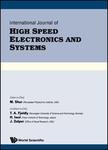版权所有:内蒙古大学图书馆 技术提供:维普资讯• 智图
内蒙古自治区呼和浩特市赛罕区大学西街235号 邮编: 010021

作者机构:Department of Electrical Engineering and Computer Science MIT USA Department of Electrical Engineering Technion-Israel Institute of Technology Israel Hewlett-Packard Laboratories USA Department of Earth Atmospheric and Planetary Sciences MIT USA
出 版 物:《International Journal of High Speed Electronics and Systems》
年 卷 期:1992年第3卷第3N04期
页 面:337-361页
学科分类:0809[工学-电子科学与技术(可授工学、理学学位)] 08[工学]
摘 要:The Supercomputer Toolkit is a family of hardware modules (processors, memory, interconnect, and input-output devices) and a collection of software modules (compilers, simulators, scientific libraries, and high-level front ends) from which high-performance special-purpose computers can be easily configured and programmed. Although there are many examples of special-purpose computers (see Ref. 4), the Toolkit approach is different in that our aim is to construct these machines from standard, reusable parts. These are combined by means of a user-reconfigurable, static interconnect technology. The Toolkit’s software support, based on novel compilation techniques, produces extremely high-performance numerical code from high-level language input. We have completed fabrication of the Toolkit processor module, and several critical software modules. An eight-processor configuration is running at MIT. We have used the prototype Toolkit to perform a breakthrough computation of scientific importance—an integration of the motion of the Solar System that extends previous results by nearly two orders of magnitude. While the Toolkit project is not complete, we believe our results show evidence that generating special-purpose computers from standard modules can be an important method of performing intensive scientific computing. This paper briefly describes the Toolkit’s hardware and software modules, the Solar System simulation, conclusions and future plans.